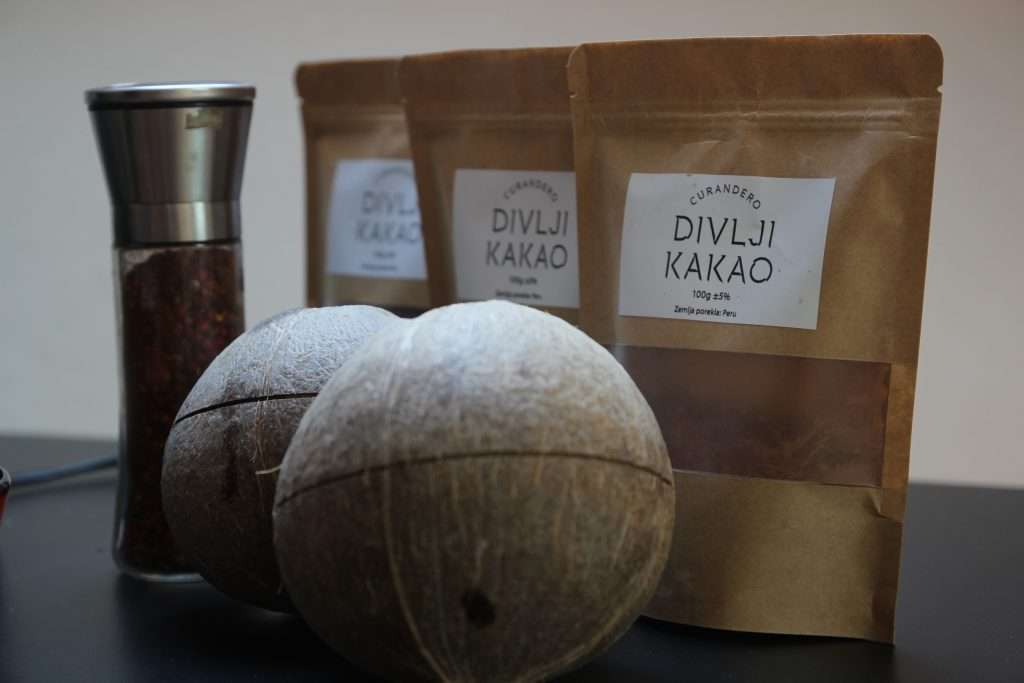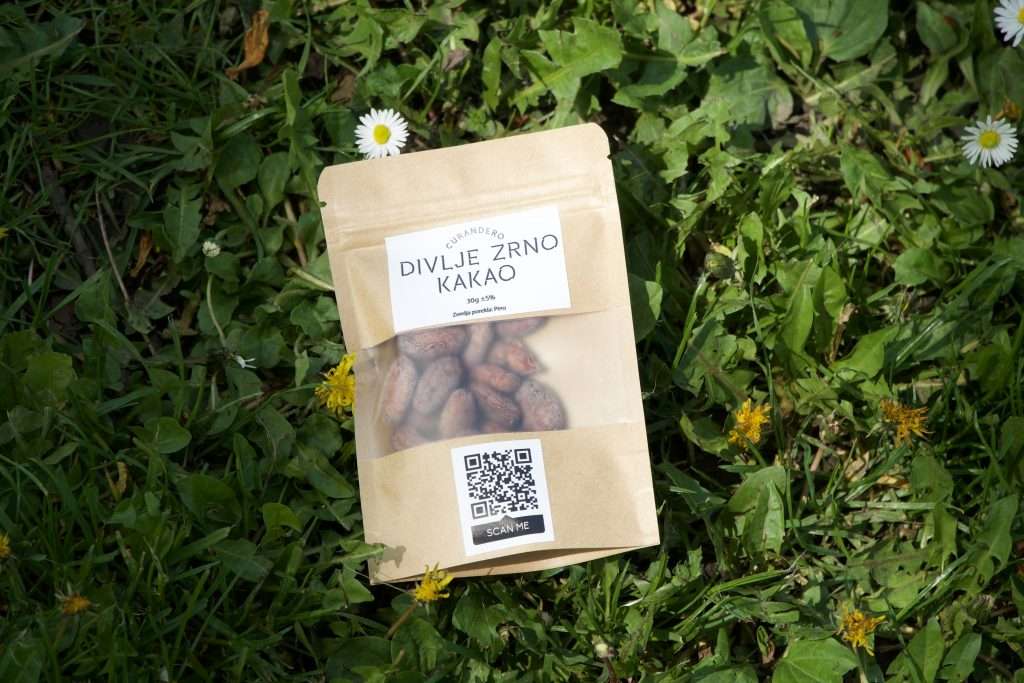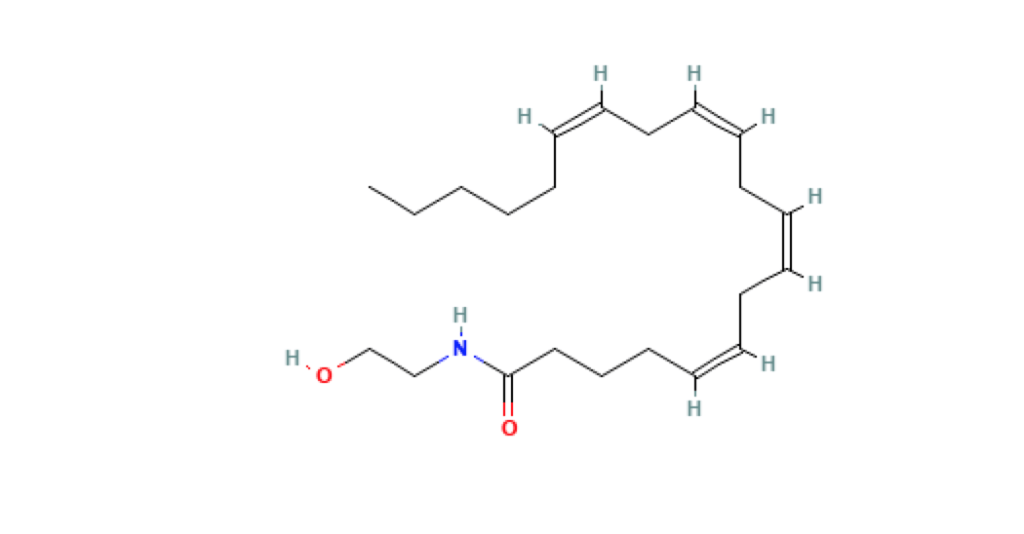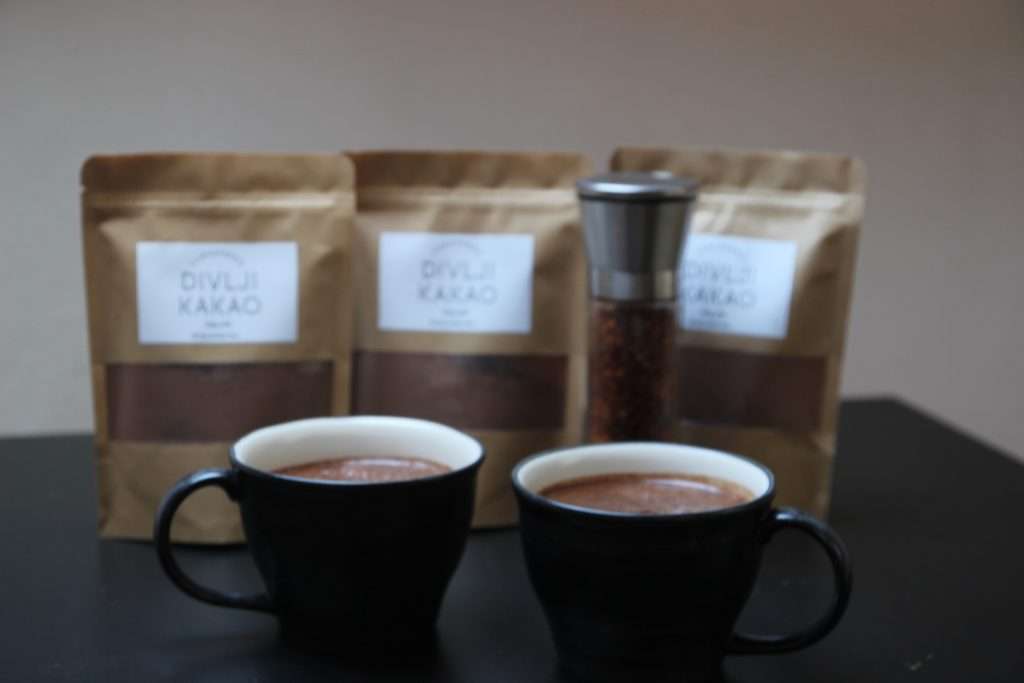What is ceremonial cacao?

Cacao is made from the edible seed of the Theobroma Cacao tree. These seeds, or “beans,” as they are commonly referred to, are the primary ingredient in chocolate and the only ingredient in our 100% Pure Ceremonial Grade Cacao. The beans are harvested from multi-coloured pods that grow on cacao trees.
Ceremonial Cacao is nothing more than non-degreased cocoa without additives. These are pure ground Cacao beans, which, after soliding, take the form of hard, but crumbling blocks.
Cacao is a native plant of South America, which was used by the indigenous inhabitants of this continent several thousand years ago, as evidenced by traces of Cacao used from the areas of today’s Ecuador. The Mayans and Aztecs – societies traditionally inhabiting Central and South America – saw Cacao seeds as food, but this plant and its fruits also had a huge symbolic meaning for them. Access to Cacao drinks could, for example, testify to human status, in addition, in the Aztec and Mayan beliefs there was ritual Cacao and Cacao products were attributed to divine origin and supernatural properties. Finally, South American cultures used Cacao beans as a means of payment. In one form or another, the importance of this product in pre-Columbian cultures could not be overestimated – this is indicated by the archaeological find, which is a huge, 4-litre cup for a Cacao drink.

From where name Ceremonial Cacao is coming?
It comes from the fact that such Cacao is used in the Cacao ceremony, i.e. during the joint consumption of the Cacao drink. In practice, however, ceremonial Cacao could be described by another name: it is real Cacao. True in the sense that nothing contained in the cocoa seeds themselves has been taken away from him. The product that we find in each of our kitchens is usually powdered Cacao with a low-fat content (eg. 11%). This, on the other hand, is full-fat Cacao. Because the whole secret lies in fat: it is in it that such beneficial substances as phenylethylamine, anandamide or theobromine are dissolved. So full-fat Cacao is the pure essence of health from Cacao fruits!
During the Cacao ceremony, higher doses are drunk (about 50-80g per person). Such an amount of Cacao has a very pleasant effect on well-being: a person relaxes, has a better mood, and wants to dance, sing, and cuddle – which is why the Cacao ceremony perfectly connects people. Real Cacao guarantees an intense, deep taste, which acquires even more colours when shared with others. It is worth joining yourself or even organizing a Cacao ceremony with your loved ones – but before that, prepare well by reading a little more about the types into which ritual Cacao is divided, as well as about the different recipes for preparing the drink!

Recipes for preparing the Cacao Drink
Traditional American recipe
Grind with a knife 40-50g of cocoa from the block and mix with hot or cold water/vegan milk or coconut water (approx. 250ml). Add spices as desired: you can use, for example, chilli, vanilla, cinnamon, and cardamom. If you fancy a sweet drink, add a little honey at the end. Ready!
Cocoa from the blender
Mix 40-50g of cocoa with hot or cold water/vegan milk or coconut water (approx. 250ml) inside of a blender. This is the fastest method of preparation. Cocoa prepared in this way has a silky texture and taste similar to milk chocolate, and also gently stimulates. In this version, you can add dates if you are a vegan. Don’t forget to add spices you like for example chilli, vanilla, cinnamon, and cardamom.
You can also invent your own recipe but most are important to don’t let it boil up. That will burn some fat and many proteins and that is not the direction we are heading for.
Health Benefits of Cacao
Improves Mood and Balances Mood Swings
Cacao contains anandamide, sometimes referred to as the bliss molecule, which binds to the cannabinoid receptors in the brain creating a sense of ease and happiness. Not only will consuming cacao improve your well-being, but it will also combat mood swings by boosting serotonin levels in the brain.

Makes your Skin Glow
Cacao is incredible for vibrant, healthy skin because it contains flavonoids that work to increase blood flow to the skin’s surface. This increased blood flow will promote cell regeneration which is necessary for glowing skin.
Prevents Premature Aging
Not only does the consumption of raw cacao improve the quality of your skin, but it can also prevent premature ageing. This is due to antioxidants in cacao which protect these cells from advanced destruction and help this skin feel healthy and youthful for longer!
Researchers have been conducting tests that suggest a component in cacao beans called theobromine may be more effective at preventing cavities and protecting against tooth decay than fluoride. This is because these compounds have antibacterial agents. Those agents fight against plaque, while also successfully working to harden tooth enamel, lessening the chances of tooth decay.
Improves Digestion
Rich in dietary fiber and magnesium, eating raw cacao on a regular basis will prevent constipation, and overall enhance your digestive health.
Improves Cognitive Function
Flavonols get absorbed into the bloodstream when consuming cacao and accumulate in the hippocampus, the region responsible for memory and learning. These flavanols then work to form new neurons, while improving their functionality and protecting them from destruction by free radicals, increasing cognitive abilities.
Reduces Risk of Cardiovascular Disease
High cholesterol levels can significantly increase the chances of developing heart disease, but thankfully raw cacao can lower LDL , or bad cholesterol, and raise HDL, the good cholesterol. This is due to the extremely high quantities of antioxidants found in cacao which protect lipoproteins from oxidizing or reacting with free radicals.
Healthy Source of Fats
Contrary to what some weight loss programs may be telling you, you need healthy fats in your diet to stimulate chemical reactions responsible for immunity, growth, and a healthy metabolism. When consumed in its purest form, chocolate made from unprocessed cacao beans is an incredible source of healthy fats.

More about Cacao
Cocoa powder and chocolate contain numerous substances among which there is a quite large percentage of antioxidant molecules, mainly flavonoids, most abundantly found in the form of epicatechin. These substances display several beneficial actions on the brain. They enter the brain and induce widespread stimulation of brain perfusion. They also provoke angiogenesis, neurogenesis and changes in neuron morphology, mainly in regions involved in learning and memory. Epicatechin improves various aspects of cognition in animals and humans. Chocolate also induces positive effects on mood and is often consumed under emotional stress. In addition, flavonoids preserve cognitive abilities during ageing in rats, lower the risk for developing Alzheimer’s disease and decrease the risk of stroke in humans. In addition to their beneficial effects on the vascular system and on cerebral blood flow, flavonoids interact with signalization cascades involving protein and lipid kinases that lead to the inhibition of neuronal death by apoptosis induced by neurotoxicants such as oxygen radicals, and promote neuronal survival and synaptic plasticity. The present review intends to review the data available on the effects of cocoa and chocolate on brain health and cognitive abilities.
The cocoa bean, like any bean, is rich in fat which represents 50% or even more of the total weight. The next most important ingredients are proteins or nitrogenous elements, including theobromine (1.0–2.5%) and caffeine (0.06–0.4%). Starches and sugars together form 20–25% of the weight of the bean. Most importantly, cocoa beans are a concentrated source of anti‐oxidants, in particular flavonoids, with the flavan‐3‐oils and their derivatives being present in high concentrations. The flavan‐3‐of compounds are mostly present in the cocoa bean in the form of epicatechin and catechin, which can also serve as building blocks for the polymeric procyanidin type B‐2. However, during the processing of the bean to cocoa powder and chocolate, the concentration of anti‐oxidants can be affected by a variety of biological processes and treatments such as fermentation, roasting and ditching. Genetic variability can also generate a 1–4‐fold difference in the anti‐oxidant content of fresh cocoa beans and the content of epicatechin has also been reported to vary from 2.66 mg g−1 in Jamaican beans to 16.52 mg g−1 in Costa Rican beans.
Cocoa beans contain low variable amounts of caffeine (0.06–0.4%), a well‐known psychostimulant. Cocoa powder contains the highest amount of caffeine followed by unsweetened baking chocolate. Dark chocolate will vary considerably in the amount of caffeine (35–200 mg 50 g−1) while milk chocolate contains relatively low amounts of caffeine (14 mg 50 g−1). The cocoa bean is also the most concentrated source of theobromine, another methylxanthine. Unlike caffeine, theobromine, also present in cocoa beans, has only a mild stimulatory effect on the central nervous system. The amount of theobromine varies with the finished product. Dark chocolate, unsweetened baking chocolate and cocoa powder contain more theobromine than milk chocolate and chocolate syrups. For example, 50 g milk chocolate contains about 75 mg of theobromine while the same weight of very dark chocolate can contain up to 220 mg of theobromine. The effects of the methylxanthines, and mainly those of caffeine, have been extensively reviewed elsewhere both concerning cognition and mental performance and the preventive effects of this methylxanthine on age‐related cognitive decline and neurodegenerative diseases will not be detailed here.
Cocoa also contains some other compounds with potential biological activity. These are biogenic amines such as serotonin, tryptophan, phenylethylamine, tyrosine, tryptamine and tyramine. The concentration of these compounds increases during fermentation and decreases during roasting and alkalinization. In general, these concentrations are irrelevant in healthy subjects since these compounds are metabolized in the intestinal mucosa, liver and kidneys by the monoamine oxidases (MAO). The effects of biogenic amines are only expressed in people with MAO deficiency and could lead to headaches and increased blood pressure and hence often to chocolate avoidance. These effects will not be discussed here.
In addition, a few other compounds with biological activity can be found in cocoa beans and derived products. These are anandamide, an endogenous ligand for the cannabinoid receptor found in low amounts, 0.5 μg g−1, salsolinol and tetrahydro‐β‐carbolines (THBCs). The latter compounds are found in milk and dark chocolate, and cocoa (5, 20, 25 μg g−1 for salsolinol and 1.4, 5.5 and 3.3 μg g−1 for THBCs, respectively). However, there is no evidence that the consumption of chocolate increases the concentration of these compounds in circulating blood. Finally, magnesium can also be found in cocoa and chocolate (90–100 mg 100 g−1 in cocoa vs. 43–50 mg 100 g−1 in dark chocolate.
In summary, this review will be devoted mostly to the health effects of cocoa and chocolate resulting from the high level of anti‐oxidants present in cocoa and chocolate rather than considering them as functional foods. This review will try to analyze whether cocoa and chocolate can be considered nutraceuticals providing health benefits, including the potential prevention of some diseases. Several review articles have been dealing recently with the potential neuroprotective and cognition-enhancing properties of flavonoids from various sources. In the present review, we will concentrate on the potential effects of flavonoids from cocoa and chocolate with a particular emphasis on brain activity and potential neuroprotective action. In addition, the effects of chocolate on mood will be considered.
